Author’s note: as of Thursday morning December 10th, the Geminids are already active. Canadian Meteor Orbit Radar (CMOR) has picked up a consistent stream of radio pings hailing from the constellation Gemini over the last few mornings, and reports of early Geminid activity seen by observers worldwide have been reported. If you’ve got clear skies this weekend over the next few mornings, don’t miss a sure-fire shower.
A grand finale meteor shower graces the skies of the Earth this weekend, as the December Geminid meteors reach their peak early Sunday morning into Monday.
The 2015 Geminids are near optimal, with the Moon a waxing crescent on the key date of Sunday going into Monday December 14th, safely out of the way and 10% illuminated, only three days past New. The Geminids have a projected plateau of activity running from 1:00 UT to 23:00 UT on December 14th, with an expected maximum falling right around 12:00 UT/07:00 AM EST. Interestingly, this peak should favor viewers along western North America in the pre-dawn hours.
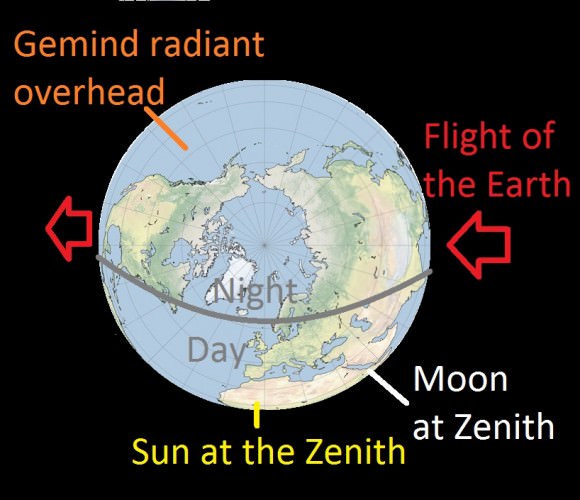
Of course, observers worldwide should be vigilant, as the shower could max out early or late.
The Geminid meteors have been dependable performers in recent years, and would probably be as well known as the summer Perseids, were it not for the fact that the Geminids peak near the start of astronomical winter in the northern hemisphere. The Geminids have surpassed other annual showers in intensity over the last decade, often displaying a rate of more than a 100 per hour. Unlike most meteor showers, the source of the Geminids isn’t a comet, but asteroid 3200 Phaethon, a fact that was only uncovered by the IRAS satellite in 1983. Is 3200 Phaethon a dead captured cometary nucleus? We may soon find out, as 3200 Phaethon passes 6.4 million miles (10.3 million kilometers) from the Earth on December 10th, 2017.
Will the Geminids top out over the next few years?
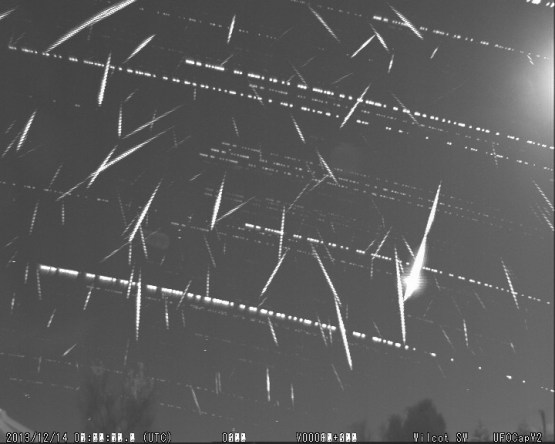
In recent years, the Geminids produced a maximum zenithal hourly rate of 253 (2014), 134 (2013), 109 (2012), 198 (2011), and 127 (2010). That’s all as per data gathered by volunteers from the International Meteor Organization, which takes data from worldwide observers. We witnessed the fine display of the 2012 Geminids from Mars Hill, North Carolina under dark Smokey Mountain skies, and can attest that the shower was already well underway before local midnight.
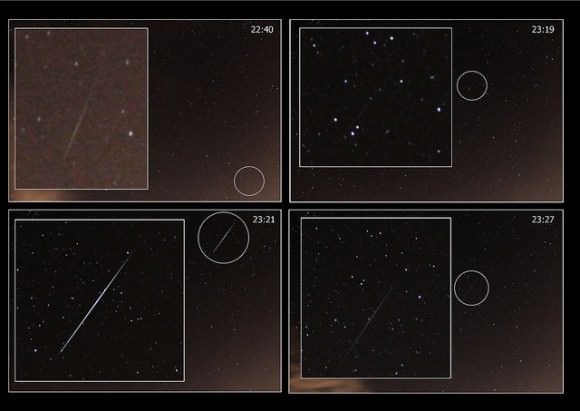
All evidence suggests that the Geminid meteor stream is a relatively new one. Observers began noting a slight uptick in meteor shower activity in the 1860s, and by the early 20th century, the Geminids had joined the ranks of annual dependable meteor showers. Interestingly, meteor shower researcher M. Plavec demonstrated that the Geminid meteor stream had an intersection point of 0.0178 AU interior to the Earth’s orbit around 1900, and this would evolve to a point 0.1066 AU exterior to our orbit by the end of this century, after which, few if any Geminids would been seen from Earth. Could the shower be headed for a climax in the early 21st century?
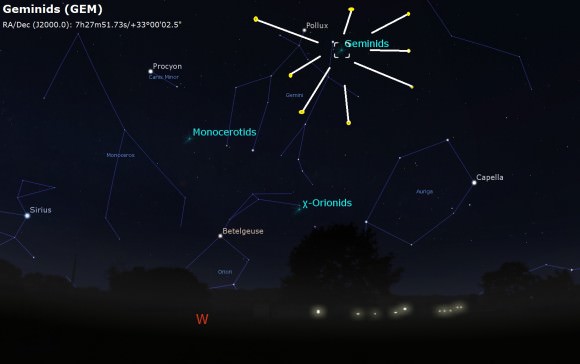
The Geminids are well placed for mid-northern latitudes. The radiant sits near the bright star Castor in the astronomical constellation Gemini, rises high above the northeastern horizon by 10 PM local, and transits the local meridian by 2 AM. Geminids are medium-to-slow movers, hitting the Earth’s atmosphere at an oblique angle moving ‘only’ 35 kilometers per second.
And the great thing about watching for meteors is, you don’t need expensive or complicated gear: just a working set of ‘Mk-1’ eyeballs and a willingness to bundle up and brave the cold. Right up to present times, reports and meteor counts made by diligent volunteer observers were not only the best, but the only source of data used to characterize and model meteor streams. You can still report your counts to the International Meteor Organization, or for fun, tweet those sightings to #Meteorwatch on Twitter.
Today, radio observations and photography have entered into meteor watching. Tune an FM radio to an unused station, and you may just hear a meteor ‘ping’ as it flits though the sky. And imaging meteors with a modern DSLR camera is easy: simply plop it on a sturdy tripod, set a wide angle lens to its widest setting, and take 30 sec to 5 minute manual exposures of the sky. Be sure to take a series of test shots first, to get the ISO/f-stop settings right for the local sky conditions. An intervalometer is a handy addition, as it can be set to shoot exposures continuously, leaving you free to observe the sky.
Ever heard a meteor ‘hiss?’ We have, though this shouldn’t be so. Meteors occur far up in the upper atmosphere, a region much too tenuous to conduct audible sound waves. However, like aurora, reports of audible meteors persist. Surprisingly, a Japanese team carried out a study in 1988 that suggests that audible meteors are a real physical phenomenon. The cause? Just possibly, an effect known as electrophonic sound sets up a localized feedback loop reflected off of buildings poles, grass, etc.
Weird stuff, indeed. All this, and the 2015 Geminids fall on the weekend to boot. Don’t miss ’em!

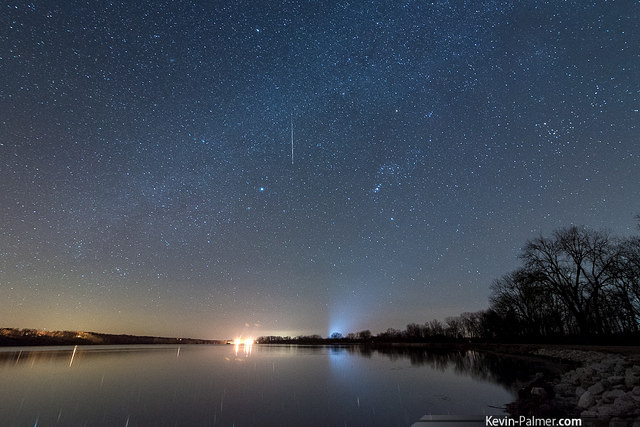
So what kind of photographic approaches can capture meteors dimmer than a fireball? Normally you need exposure times in minutes to capture stars that are standing “still”. What kind of lens setup will capture these compilations of meteors we see here?
Myself, I use a 200-18mm zoom set all the way open and fast f-stop, and ISO 400-1600 depending on sky conditions. And yeah, meteors have to be fairly bright (+1 mag or better) to show up, often in post review. Anyone else have input?
It confuses me also. I photographed a Perseid which was brighter than Altair, but when I looked at the image it was barely visible. I believe the experts have motion detection software which captures only the meteor and no excess data.
Thanks, I had this same issue starting out in DSLR meteor photography. Some of the older Nikons are very ‘noisy’ under dark skies, washing out the stars we want to capture. Noise Reduction helps, as well as shooting at an ISO concurrent with the sky conditions… as well as a dark sky as free of air glow as possible. Hope this helps, I should do a full post just on meteor photography in 2016, and pick the brains of greater minds than I. thoughts, anyone?
PRACTICE!
cough cough “35 kilometers per hour” cough =D